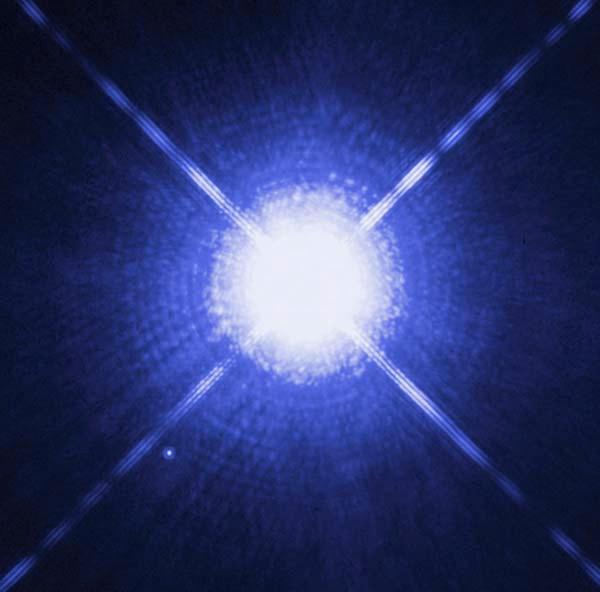[/caption]
White dwarf stars are the corpses of stars; what happens once they’ve used up all their fuel and lack the temperature and pressure to continue fusion in their core. A white dwarf will be the end for all the small and medium mass stars out there – 97% of the stars in the Universe will become white dwarfs. The most massive stars in the Universe will suffer far more violent ends as supernovae or neutron stars. Let’s take a look at white dwarf stars.
For the majority of its lifetime, a star is in the main sequence phase of life; it’s converting hydrogen into helium at its core, and producing a tremendous amount of energy. Eventually a star runs out of hydrogen fuel in its core and its fusion stops. The star starts to collapse, but then a new shell of hydrogen fuel gets going. This causes the outer envelope of the star to puff out into a red giant. If a star is large enough, it will even be able to begin helium burning in its core creating carbon.
Once this fuel runs out, though, that’s it. The star is completely out of fuel it can use, and so it puffs out its outer layers, revealing the hot carbon core; the leftover material from this last fusion reaction. The star is now a white dwarf. It starts out hot, the temperature that the star’s core was, but then it starts to cool down over time. Eventually, after billions and even trillions of years time, the white dwarf will cool down to the background temperature of the Universe.
A white dwarf star is roughly the same size as the Earth, but it’s extremely dense, compacting the core of the former star into a region only 10,000 km across. Their average density is about 1,000,000 times denser than the density of the Sun. A single sugar cube sized amount of white dwarf would weigh about 1 tonne.
White dwarfs can only be up to 1.4 solar masses. Beyond this point, the pressure exerted by the individual atoms can’t hold back the gravitational pressure pulling it together. The white dwarf would collapse down to a more compact object, like a neutron star or a black hole.
We have written many articles about stars on Universe Today. Here’s an article about a new type of white dwarf star detected. And here’s an article about a missing white dwarf.
Want more information on stars? Here’s Hubblesite’s News Releases about Stars, and more information from NASA’s imagine the Universe.
We have recorded several episodes of Astronomy Cast about stars. Here are two that you might find helpful: Episode 12: Where Do Baby Stars Come From, and Episode 13: Where Do Stars Go When they Die?
References:
NASA
Wikipedia
Windows to Universe

